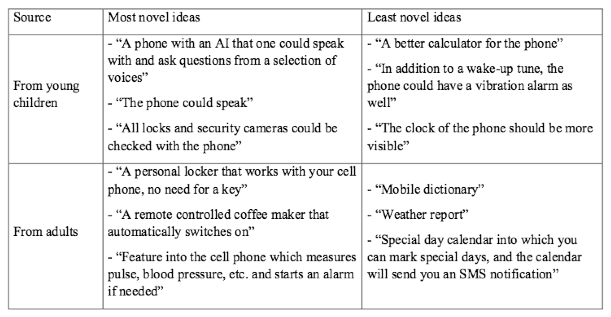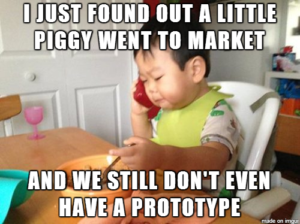 You’ve heard it before – you need to think outside the box. Come on, it’s so easy, why aren’t you just thinking outside that box already?
You’ve heard it before – you need to think outside the box. Come on, it’s so easy, why aren’t you just thinking outside that box already?
The problem with this statement is that you may not even be aware of where the box is until you are already out of it, or have at least pushed its boundaries. In other words: the box can be defined by hindsight. Hindsight always provides much more clarity once you are able to look back and say “Hey, that was a great idea! Way to think outside of that box!”
So the question is, how do you know where those boundaries are, and how do you know when you are outside of it in a meaningful and positive way?
I once read that “adults have to think outside of the box, while children don’t even know there is a box to begin with.” I believe this to be mostly true.
In 2006, a study was conducted around the idea that children are the best resource for innovation and creative ideas for mobile technology. These children have been immersed in technology since they were born (which is even more true today), without being limited by the “existing technology frames” that might hinder the creativity of an adult.
A Quick Overview of the Study
After asking a group of young children and a group of adults to come up with new ideas for mobile services, they were scored on quality, originality and paradigm relatedness. It soon became clear that the children were much more successful in creating ideas that were original and pushed the boundaries of the current state of mobile technology in 2006.
Some of the best suggestions provided by the sample group of young children include:
- “The camera of the phone would have a recognition feature which would recognize persons in photos.”
- “A phone with an AI that one could speak with and ask questions from a selection of voices”
- “All locks and security cameras could be checked with the phone”
- Apps for your mobile device are provided by the majority of home security companies today, as well as independent security apps for personal use

What is the take-away?
While some of these ideas may seem like a no-brainer to us today, this study was conducted in 2006 when the majority of ideas suggested by the group of young children did not actively exist in mobile technology. The first iPhone was not even released until June 2007 with a lot of this technology not being available until a later year or more advanced model.
Facial recognition technologies have been around since the 1960’s, and Siri and Cortana had been in development for many years before their release, however, it is still interesting that a young child in 2006 would see a gap or need for a technology that he/she did not even know existed.
If you want to know where the boundaries are and how to think outside of the box for creative and innovative ideas, you have to be open to every idea thrown at you (even the most ridiculous ones.) As a company or agency, it is important to learn how to step away from your own (or your industry’s) limiting beliefs about what works and what is realistic and implementable.
How does this help me?
I’m not totally sold on the “no such thing as a bad idea” concept, but the “no bad ideas in a brainstorm” notion should be an exercise that every company or agency should adopt. Stop worrying about implementation, don’t even think about ROI, and open your mind to a world of possibilities.
If you have an impulse to say “that is ridiculous” or “this is / could be bad for our brand”, stop and ask yourself why? Why did you think this idea was so silly or what about this idea makes it bad?
Think like a child, act like an adult
- Get a small group of people together with the expectation that there is no limitation.
- Spend time thinking of ideas and write them all down (yes, ALL of them).
- After you have your list of crazy ideas, step away for a few hours or even a day or two.
- Revisit the list and look at it from the “adult” perspective – poke holes, narrow it down, discuss goals and ROI, etc.
This exercise is an important one because any crazy idea can spark very real conversations during step #4. What if someone comes to you with the idea of putting your logo on the moon? Write it down, step away and when you come back, start asking why?
Why would you want your logo on the moon?
You probably don’t, but here some questions you may want to start asking:
- Do we want to get the public talking about our company? What do we want them to be saying? What do we want to be remembered for?
- Do we want to be known as a company that is innovative, outside of our products or services? What can we do outside our products / services that will get our name out there?
- The moon would open our audience to be world-wide – are we trying to reach a worldwide audience? Can we have the same effect on a smaller audience and build from there?
- Why use our logo? Do people know what our logo stands for? Do we want it to become a symbol? And a symbol for what? What message are we trying to say?
- How much can we spend? If we can’t make it to the moon, what can we do to get our message out there? How do we start this conversation in the most cost-effective way?
If you start with an idea, you can define the limitations and then know how far you can push them. This allows you to turn a crazy idea or a challenging situation into an opportunity. Maybe you won’t make it to the moon in 2016, but why not act as if it is a real goal for 2066? Strip away only what is currently impossible and build a list of long-term and short-term goals that are necessary in order to achieve the true meaning behind that objective.



